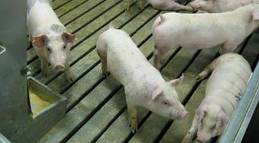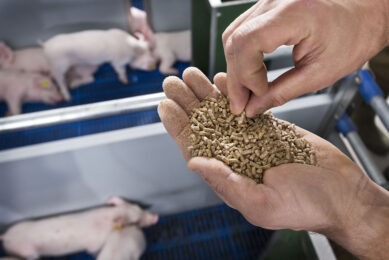Saving on feed costs: Part 2. Improve feeding management

Feeding management is a delicate zone for saving feed costs. The extra labour involved, the risk of reducing performance beyond a non-acceptable level, and the sophistication in labour demanded might not make up for the reduction in cost due to lower feed use. Still, when thinking things through properly, the following suggestions could be viable.
By Dr Ioannis Mavromichalis, Ariston Nutrition SL, Nutrition & Consultancy
In the first instalment of this series, we discussed how to reduce feed cost by ways of nutrition. These were mostly exercises on paper, or rather on the computer in front of a formulation program. But, these are best left for a qualified nutritionist. In this article, we will be discussing how feeding management can actually reduce cost and improve profitability by reducing feed use. These are intervention strategies that involve cooperation and understanding between management and labour and have very little to do with feed composition. Some if not all of these management suggestions are valid not only in periods of financial difficulties but for all times as they are quite successful in reducing wastage.
Trim the piglet feed
When pig prices drop, the first reaction of pig producers worldwide is to look for a cheaper piglet feed, be it a creep diet or a post-weaning formula. This is invariably bad advice to follow. A cheaper feed is almost always a lower quality feed. Think about it. When prices of ingredients are high and the worldwide economic crisis is pressing everyone to maintain profits, something has to give to produce a cheaper feed. Enough said!
My advice during times of loss has always been not to reduce feed quality but rather quantity. A low quality feed will most likely lead to increased morbidity, mortality, and overall drop in growth performance. In contrast, a prudent use of a high quality feed (the one usually fed to pigs, which in my opinion should always be of the highest quality) might prevent unpleasant surprises while maintaining acceptable levels of performance. Let me explain with a real example.
A prudent use of a high quality feed might prevent unpleasant surprises while maintaining acceptable levels of performance.
A customer, raising about 30,000 pigs per year was feeding 1.5 kg of Phase 1 feed to weaned pigs (23 days of age, 6.5 kg bodyweight). When pig prices dropped to the level where money was lost for each pig sold, we started reducing the quantity of the above feed by 0.25 kg increments for each successive batch of weaned pigs. Not a scientific trial, for sure, but good enough to make a business decision.
In the fourth batch, where weaned pigs were assigned to receive 0.5 kg feed per head, we started observing a significant drop in overall health and well-being in addition to a marked drop in growth performance. This was deemed unacceptable. Thus, we established with confidence that 0.75 kg feed per head is the accepted minimum for this farm. No doubt, growth performance dropped by about 50% (a nice coincidence given that feed allowance was reduced by 50% as well), but pigs still grew without having more runts, sick or dead pigs. The Phase 1 feed cost about €800 per metric tonne, whereas the one used to top it up (the next diet) was about €500 per metric tonne. With the above numbers, we estimated we saved about €7,000 per year. Not much, but when one loses €10 per pig at the slaughterhouse, every cent counts!
Reduce feed wasted in finishing
I know, this is old advice, but think about it. Instead of feed ending up joining the manure to be disposed of at a cost, it is actually consumed by pigs! Not a bad trade to spend some time once in a while to make sure feed is not overflowing from feeders. Of course, it is not an easy or pleasant task, but when feed wastage can be as high as 25%, it makes sense to stop wasting as much feed as possible before one considers using a cheaper feed.
Seen from another angle, reducing feed wastage improves efficiency of feed utilisation, which is always a desirable effect as it means less cost per kilogramme of pig meat produced. I don’t have a customer case, because it is so difficult to measure feed wastage on a real farm, but let’s work through some calculations.
Let’s assume feed wastage in a finishing barn is a typical 10%, which is not far away from the truth for most such facilities. Let’s also assume these finishing pigs ‘consume’ 90 kg feed in the final phase before marketing, gaining 30 kg body weight with a 3:1 feed/gain ratio.
Again, not far from reality despite the use of ‘round’ numbers to make this example easier to present. Out of the 90 kg feed disappearing or assumed as ‘feed intake’ in calculations, only 81 kg are actually consumed by pigs and 9 kg (10% of 90) are wasted down the slats. Now, let’s assume that with proper and more frequent adjustment of feeders we manage to drop feed wastage down to 5%, not an impossible target. Apparent feed intake becomes 85 kg; 81 kg for the pigs and 4 kg for the pits. As pigs will still gain 30 kg bodyweight, feed/gain ratio is now 2.83 or roughly 5% less than before. Notice how the percentage reduction in feed wastage translates to a much similar percentage drop in the feed/gain ratio. Pure profit!
Do not overfeed gestating sows
In my experience, most gestating sows receive more feed than they actually need and there are many reasons for this, not least of which is the notion that a slightly fatty sow will produce heavier piglets at birth. Far from the truth, sows can and should remain on the lean – but not emaciated – side without any loss in performance. In truth, a lean sow will give birth easier, and she will experience higher feed intake during lactation leading to heavier weaning weights and less days to oestrus.
Under most commercial conditions, and assuming a typical feed composition, not many gestating sows should receive more than 2.5 kg feed per day. This might seem reasonable to most, but there is a school of thought in certain parts of the world where gestating sows regularly receive 3 to 4 kg feed per day throughout gestation. In a 1 to 5 body score scale, sows should be on average on the 3.5 level. At times where money is lost on the farm, they could be reduced temporarily to a body score of 3, but not beyond this to ensure productivity, health, and longevity.
Keep feed fresh for lactating sows
Walking through a typical farrowing barn, several hours after feeding hours, one can always find several if not many feeders still full or half-full with feed, often fouled with water and staring to ferment. Quite often, when the next feeding time comes, the worker is forced to clean the feeder before adding new feed or the sow refuses to eat the stale or fouled feed. And, always, the old feed is damped down the pits.
So, let’s look at the numbers. In a barn housing 100 sows, let’s assume there are 5 such feeders that need cleaning at each feeding, making 10 feeders per day (something that I believe is on the low side for many farms). If each feeder contains at minimum 1 kg feed (most likely more!), the wastage is 10 kg per day or 3 to 4 metric tonnes of feed per year. As lactation feed is not free, there is no good reason for such obvious bleeding of money.
So, what can be done? In small farms, feed allowance should be tied to sow condition, health, and size of litter. In other words, the worker and manager should spend a bit extra time to assess the needs of each individual sow and try to feed her according to her appetite. In large farms, where this is more difficult, it would be best to increase the number of feedings per day (say, from two to three) reducing thus the amount of feed delivered per feeding. This will eliminate the problem of having to ingest a large amount of feed in a short period of time, especially troubling during the first couple of weeks post-farrowing when appetite and physical stomach capacity are still increasing to cope with the increased metabolic demand for nutrients.
Source: Pig Progress Volume 25 nr 2
Join 18,000+ subscribers
Subscribe to our newsletter to stay updated about all the need-to-know content in the pigsector, three times a week. Beheer
Beheer










 WP Admin
WP Admin  Bewerk bericht
Bewerk bericht